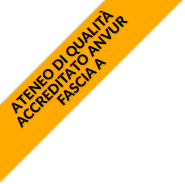The Interregional Agency for the River Po (AIPo), following the extraordinary flood events that occurred between the end of 2009 and the beginning of 2010, found it urgent to adapt the expansion tank on the Panaro river for safety of the Modena area, with the intention of equipping the bottom lights of the barrier with mobile gates. By virtue of these facts, AIPo has entrusted the Department of Civil Engineering, Environment, Territory and Architecture (DICATeA) of the University of Parma with the task of carrying out a study “for the realization of the physical model of the regulation of the expansion tank on the Panaro river in the municipality of San Cesario (MO) “.

The physical model was created following Froude’s similarity criterion, adopting an undistorted geometric scale of 1:50. The model reproduces:
- The main building, consisting of an overflow barrier in which nine bottom lights are open, four of which are already equipped with gates, and a surface spillway shaped according to a profile of known geometry;
- The dissipation tank, consisting of a depressed bed with respect to the valley bed, in which four rows of Rehbock teeth are placed;
- A short section of the riverbed downstream of the dissipation tank (up to the support bridle);
- A portion of the tank that constitutes the expansion tank upstream of the building, including the embankment.



The tests necessary for the reconstruction of the flow scale of the regulating artifact in the conditions prior to modeling were carried out. Then, other necessary tests were performed to reconstruct the outflow stairs that would characterize the building if one, two or three of the central lights were completely closed (a condition made possible by the mobile gates that AIPo subsequently installed to complete the work). The operation of the spillway was analyzed with specific tests, conducted by occluding all the background lights, so that the flow could be evacuated exclusively above the overflowing edge.

The execution of all the aforementioned tests required some preliminary checks and studies. In particular, it was necessary to carry out a series of submergence tests, aimed at evaluating the influence of the downstream level on the upstream level (i.e. the effective capacity of the building and / or of the support bridle to guarantee the independence of the water level inside the reservoir by the downstream water lines).
Having verified the dependence of the level upstream of the reservoir from that of the valley, a numerical modeling of the valley bed was carried out to evaluate the boundary conditions to be imposed in the physical model at the support bridle (limit of the physical model). The section of the molded riverbed extends for about 24 km, from the section immediately downstream of the dissipation tank.





